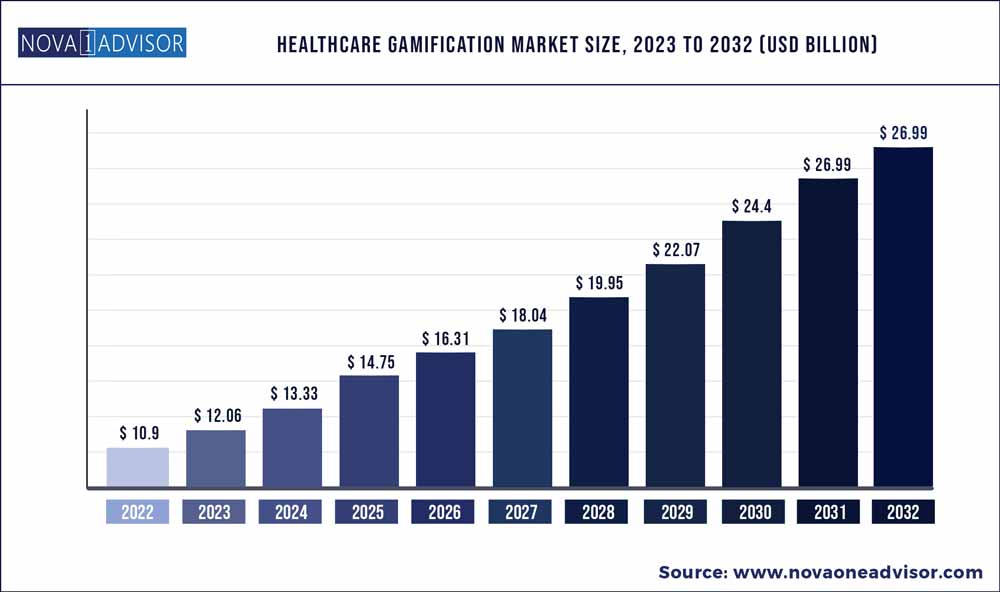The global healthcare gamification market size was exhibited at USD 10.9 billion in 2022 and is projected to hit around USD 29.85 billion by 2032, growing at a CAGR of 10.6% during the forecast period 2023 to 2032.

Key Pointers:
- By Casual games held the largest market share in 2022.
- The serious game is predicted to be the fastest growing sub-segment during the forecast period.
- The therapeutic application sub-segment is anticipated to be the fastest growing during the forecast period.
- Enterprise-based sub-segment held dominating share in 2022.
- Consumer-based sub-segment is expected to be the fastest growing during the forecast period.
- The Asia-Pacific has the largest market share and is predicted to be dominating the market during the forecast period
Gamification in the healthcare industry is gaining momentum. Digital practitioners or consultants use various gaming principles and techniques to improve patient clinical outcomes. Gamification is mainly used in the wellness and healthcare industry for disease prevention, patient behavioral management, medication adherence, and telehealth. These games are patient-centric and designed to improve patient engagement by making their experiences more personalized.
The patient participates in gaming activities and earns rewards. In some gamification apps, patients compete with themselves and set challenges and personal goals, while, in some apps, the patient completes with other patients. By participating in different activities and challenges, patients feel motivated and engaged. The companies developing mobile healthcare games are incorporating games into digital monitoring apps.
The main purpose of incorporating the game into digital monitoring apps is to increase patient engagement and create health data that can be used for personalized treatment. These apps not only improve patient clinical outcomes but also help medical practitioners too.
The growing penetration of smartphones is the main factor driving the demand for the global healthcare gamification market during the forecast period. As per bankmycell.com, globally, there are around 6.3 billion smartphone users in 2021, and the number is expected to reach 7.33 billion by 2025. This suggests the demand and penetration of smartphones have increased over the past years and largely boosted the connectivity among users.
The increasing internet penetration in rural parts of the world has also contributed to the growth of the market. Furthermore, with the increasing number of smartphone users, mobile health app developers are incorporating games into digital health monitoring apps to increase patient clinical outcomes. Many mobile healthcare applications offer their users medical information such as diagnosis and treatment and help them manage their health.
These applications, with the help of various sensors in a smartwatch or smartphone, help users check and monitor their health conditions. For instance, the dietary intake monitoring app enables dialysis patients to self-monitor their food intake by providing real-time feedback that is, this is a form of personalized healthcare based on individual needs and control. Moreover, this application is useful for all types of users, regardless of their health status.
User acceptance is the key factor for the growth of the global healthcare gamification market analysis. However, the low acceptance rate and lack of knowledge about the apps among patients are the major factors hindering the global healthcare gamification market growth during the forecast period. Moreover, it is difficult to understand patient psychology using smartphones and digital apps.
In addition, there has been a dearth of knowledge of healthcare gamification in emerging nations. As a result, the rate of adaptation is low. Such factors are expected to hinder market growth during the forecast period.
Healthcare Gamification Market Segmentation
Healthcare Gamification Market Key Players And Regions

